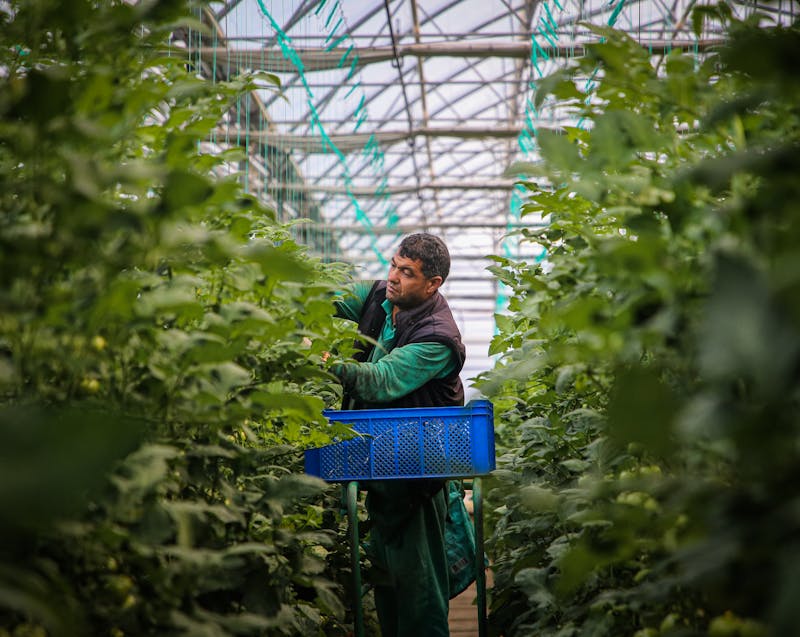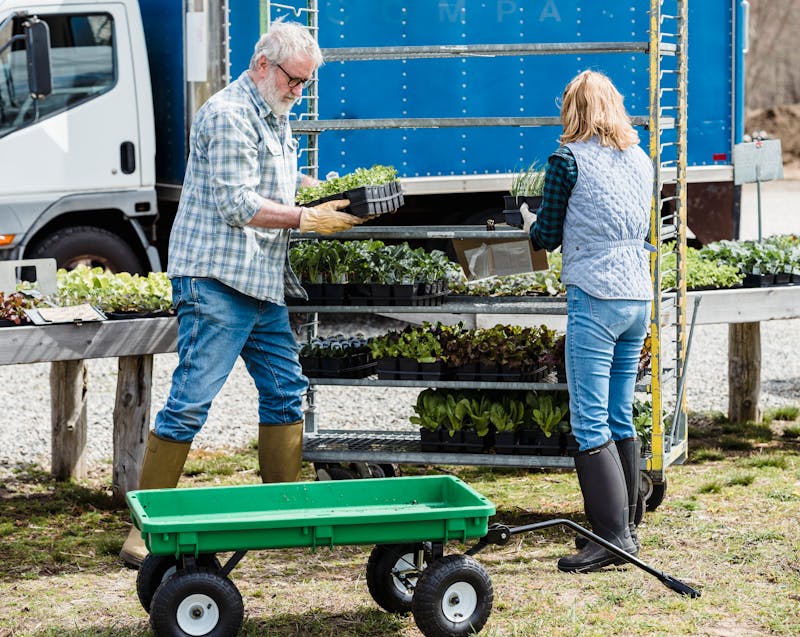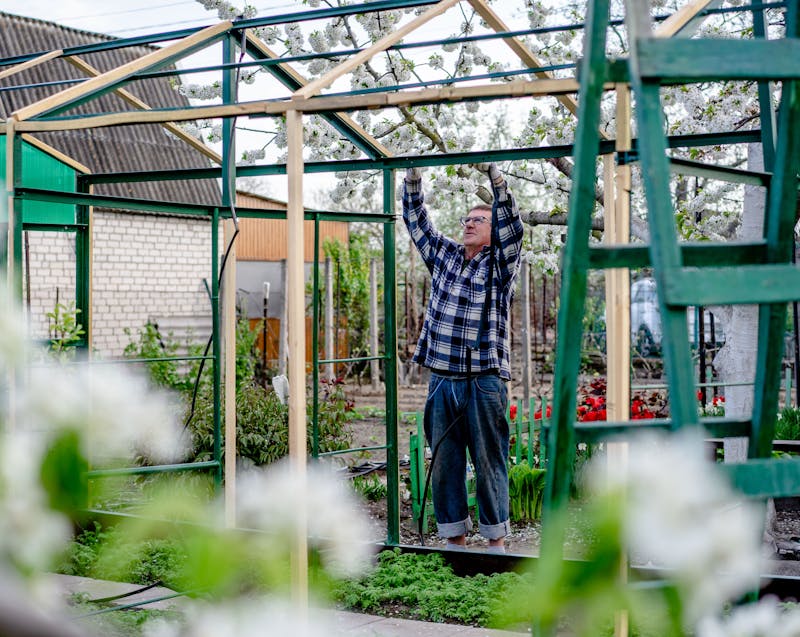- Choose a sunny, well-drained location with at least six hours of direct sunlight daily for optimal growth.
- Select durable materials like aluminum frames and polycarbonate panels to maintain insulation and light balance year-round.
- Maintain consistent temperature (65–75°F) and humidity (50–70%) using vents, fans, heaters, and thermal mass for stable conditions.
- Use efficient irrigation systems like drip lines or soaker hoses and high-quality soil rich in organic matter.
- Grow a mix of cool- and warm-season vegetables to maximize productivity throughout the year.
- Implement integrated pest management and perform regular maintenance to keep the greenhouse healthy and efficient.
- Building a greenhouse is a long-term, sustainable investment that provides fresh produce, reduces grocery costs, and adds value to your home.
Building a greenhouse is one of the most rewarding projects any homeowner can take on. It’s not just about extending your growing season—it’s about creating a controlled, sustainable environment that allows you to harvest fresh vegetables no matter the weather. Whether you’re a seasoned gardener or a beginner looking to grow your first tomato plant, having a greenhouse can completely transform how you garden and eat throughout the year.
This comprehensive guide walks you through everything you need to know about how to build a greenhouse for year-round vegetable gardening—from choosing the right location and materials to managing temperature and humidity for optimal growth.
Why Build a Greenhouse for Year-Round Gardening?

Before diving into construction, it’s worth understanding why homeowners choose to invest in a greenhouse. The primary benefit is control—control over temperature, moisture, pests, and growing conditions. With the right setup, you can harvest fresh lettuce in January or ripe tomatoes in November, regardless of your local climate.
A greenhouse acts as a buffer against unpredictable weather. It traps sunlight, converts it into heat, and maintains a stable growing environment. For homeowners who value self-sufficiency, sustainability, and healthy living, a greenhouse is a smart, long-term investment that pays off in both food and satisfaction.
Key Benefits:
- Extended growing season: Grow vegetables even during the cold months.
- Pest and disease control: Keeps out most insects and animals.
- Water efficiency: Reduce waste with controlled irrigation.
- Sustainable food source: Fresh produce from your backyard all year.
- Increased property value: An attractive feature for eco-conscious buyers.
Step 1: Choosing the Right Location for Your Greenhouse
Your greenhouse’s location determines its success. The goal is to maximize sunlight exposure while providing easy access and protection from harsh winds. Take the time to observe your yard before deciding where to build.
A good rule of thumb is to place the greenhouse where it gets at least six hours of direct sunlight daily, especially during winter. In most regions, a south or southeast-facing area works best, as it captures morning and midday sun—the most productive hours for photosynthesis.
Key Considerations:
- Sunlight exposure: Avoid shaded areas from trees, fences, or buildings.
- Wind protection: Build near a windbreak (like a fence or hedge) to prevent heat loss.
- Drainage: Choose slightly elevated ground to prevent flooding.
- Accessibility: Ensure easy access to water and electricity sources.
- Space planning: Leave room around the greenhouse for maintenance and ventilation.
Pro Tip: If you live in a particularly windy or snowy area, consider anchoring your greenhouse to a solid foundation to prevent shifting or damage.
Step 2: Deciding on Greenhouse Size and Design
The size and design of your greenhouse depend on your gardening goals, available space, and budget. Homeowners often start small, but if you plan to grow a variety of vegetables year-round, building a slightly larger structure can save you from future expansion headaches.
Popular Greenhouse Designs:
- Lean-To Greenhouse: Attached to an existing structure (like your home or garage). Great for smaller yards.
- A-Frame Greenhouse: Simple design that sheds snow easily and provides good light distribution.
- Quonset (Hoop House): Made from flexible PVC or metal hoops; affordable and ideal for seasonal growers.
- Gable Roof Greenhouse: Classic design with excellent air circulation and space efficiency.
- Geodesic Dome: Modern and energy-efficient, designed for optimal light and heat retention.
Questions to Ask Before Choosing a Design:
- What vegetables do I plan to grow?
- How much space do I need for paths and work areas?
- Do I want a permanent or temporary structure?
- How will I control temperature and ventilation?
Pro Tip: Even a small 8×10 ft. greenhouse can support a household’s year-round salad greens, herbs, and compact vegetables.
Step 3: Selecting the Right Materials
Your greenhouse materials affect light transmission, insulation, and durability. There’s no one-size-fits-all solution—it depends on your local climate, budget, and how often you plan to use the structure.
Frame Materials:
- Wood: Aesthetically pleasing and easy to work with, but requires regular maintenance.
- Aluminum: Lightweight, rust-resistant, and durable—great for long-term use.
- Galvanized Steel: Strong and affordable, but can corrode if not treated.
- PVC: Easy to assemble and inexpensive, best for small or temporary greenhouses.
Covering Materials:
- Glass: Excellent light transmission, but expensive and heavy.
- Polycarbonate Panels: UV-resistant, durable, and offer good insulation.
- Polyethylene Film: Low-cost option, though it may need replacement every few years.
Best Combination for Year-Round Gardening:
An aluminum or galvanized steel frame paired with twin-wall polycarbonate panels provides a balance of strength, insulation, and light diffusion—perfect for maintaining stable temperatures in all seasons.
Step 4: How to Build a Greenhouse (The Construction Process)
Now that you’ve planned your design and materials, it’s time to bring your greenhouse to life. This phase can take anywhere from a weekend to several weeks, depending on your design and skill level.
Basic Construction Steps:
- Lay the Foundation:
- For small greenhouses, a treated wood frame or concrete pavers can suffice.
- Larger, permanent structures should use a concrete foundation for stability and durability.
- Assemble the Frame:
- Follow your greenhouse kit’s instructions or your own design plan.
- Secure all joints tightly to prevent air leaks and ensure strength.
- Install the Covering:
- Attach glass, polycarbonate, or plastic sheeting evenly to avoid gaps.
- Use weatherproof sealants to enhance insulation.
- Add Doors and Ventilation Panels:
- Install adjustable vents or exhaust fans to regulate airflow and temperature.
- Set Up Internal Systems:
- Add benches, irrigation lines, and temperature control systems before moving plants in.
Pro Tip: Always double-check structural stability before installing covers. A small misalignment in the frame can lead to leaks or structural issues later.
Step 5: Temperature and Humidity Control
Maintaining consistent temperature and humidity levels is crucial for year-round vegetable gardening. Fluctuations can stress plants, reduce yields, and invite pests.
Temperature Management Tips:
- Use automatic vents or exhaust fans to release excess heat during the day.
- Install a thermostat-controlled heater for cold nights and winter months.
- Add thermal mass (like water barrels or concrete blocks) to store heat during the day and release it at night.
- Shade cloths or roll-up sides help keep the interior cool in summer.
Humidity Control Tips:
- Maintain humidity levels between 50–70% for most vegetables.
- Use a hygrometer to monitor levels daily.
- Water plants early in the morning to prevent overnight condensation.
- Ensure proper air circulation with oscillating fans.
Pro Tip: Aim for a steady temperature between 65°F and 75°F (18–24°C) for most vegetables. Consistency is more important than precision.
Step 6: Setting Up Irrigation and Soil Systems
Hand watering can work for small greenhouses, but as your garden grows, automated irrigation becomes more efficient. Proper watering ensures consistent plant growth and prevents stress.
Efficient Irrigation Systems:
- Drip Irrigation: Directly delivers water to plant roots, reducing evaporation.
- Soaker Hoses: Evenly distribute moisture throughout raised beds.
- Misting Systems: Ideal for seedlings and plants that require higher humidity.
Soil Preparation Tips:
- Use high-quality potting mix or loamy soil rich in organic matter.
- Incorporate compost and perlite for aeration and nutrient retention.
- Rotate crops to maintain soil health and prevent pest buildup.
Pro Tip: Raised beds or containers help improve drainage and allow better control over soil composition inside your greenhouse.
Step 7: Choosing the Best Vegetables for Year-Round Greenhouse Gardening

One of the biggest advantages of a greenhouse is the ability to grow a diverse range of vegetables regardless of the season. However, some crops are better suited to year-round cultivation than others.
Cool-Season Vegetables:
- Lettuce
- Spinach
- Kale
- Broccoli
- Carrots
- Radishes
Warm-Season Vegetables:
- Tomatoes
- Peppers
- Cucumbers
- Eggplants
- Zucchini
- Beans
Perennial Favorites:
- Herbs like basil, parsley, thyme, and rosemary can thrive year-round with proper care.
Pro Tip: Group plants with similar light and temperature needs together to simplify maintenance and improve growth efficiency.
Step 8: Managing Pests and Diseases in Your Greenhouse
A greenhouse offers excellent protection from outdoor pests, but it can also create a haven for certain insects and fungi if not properly managed. Prevention is the key to a healthy, productive environment.
Common Greenhouse Pests:
- Aphids
- Whiteflies
- Spider mites
- Fungus gnats
Prevention and Management Tips:
- Inspect new plants before introducing them to the greenhouse.
- Use yellow sticky traps to monitor pest activity.
- Encourage beneficial insects like ladybugs and predatory mites.
- Maintain good air circulation and remove dead plant material promptly.
- Apply organic pest control sprays (neem oil, insecticidal soap) as needed.
Pro Tip: Avoid overwatering and excessive humidity—both can encourage fungal diseases like powdery mildew or root rot.
Step 9: Maintaining Your Greenhouse Year-Round
A greenhouse requires regular upkeep to remain efficient and productive. Seasonal maintenance helps you avoid costly repairs and ensures a stable growing environment.
Monthly Maintenance Checklist:
- Clean glazing panels to maximize light transmission.
- Inspect vents, fans, and heaters for functionality.
- Check for leaks and reseal gaps.
- Disinfect benches and tools to prevent disease spread.
- Rotate crops to keep soil nutrients balanced.
Winter Maintenance:
Insulate walls, check heating systems, and reduce watering frequency.
Summer Maintenance:
Use shade cloths, increase ventilation, and water plants more often to avoid heat stress.
Pro Tip: Keep a greenhouse journal to track planting schedules, temperature data, and crop yields for continuous improvement.
Step 10: Cost Considerations and Long-Term Value
Building a greenhouse involves upfront investment, but the long-term savings and rewards make it worthwhile. The cost depends on size, materials, and automation level.
Estimated Cost Breakdown:
- DIY small greenhouse: $300–$1,000
- Mid-sized structure: $1,500–$5,000
- Fully equipped, automated greenhouse: $10,000 or more
Ways to Save Money:
- Reuse old windows or recycled materials.
- Opt for a DIY kit instead of hiring contractors.
- Start small and expand later.
- Use solar-powered fans and heaters to cut utility costs.
Long-Term Benefits:
- Continuous food supply
- Reduced grocery bills
- Healthier diet
- Sustainable living
- Increased property value
A well-built greenhouse is more than a hobby—it’s a sustainable lifestyle choice that keeps your family connected to nature and healthy food all year round.
Conclusion: Building Your Greenhouse for a Sustainable Future
Learning how to build a greenhouse for year-round vegetable gardening is an empowering experience for homeowners who want control over their food supply and a closer connection to nature. With careful planning, the right materials, and consistent maintenance, your greenhouse can become a thriving mini-ecosystem that supports you through every season.
Start small, experiment with crops, and adjust your setup as you go. The joy of harvesting fresh vegetables in the middle of winter makes every effort worthwhile.

